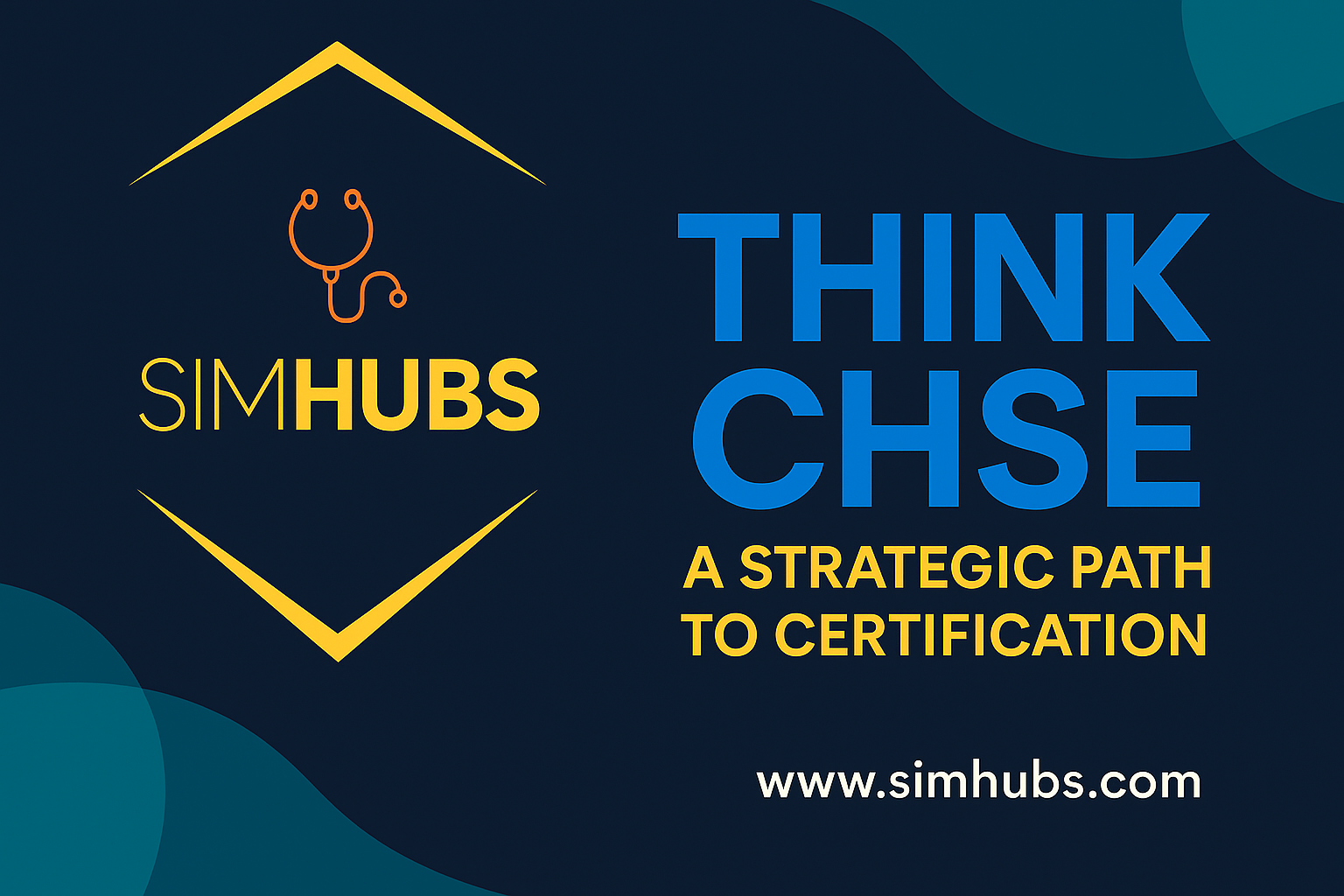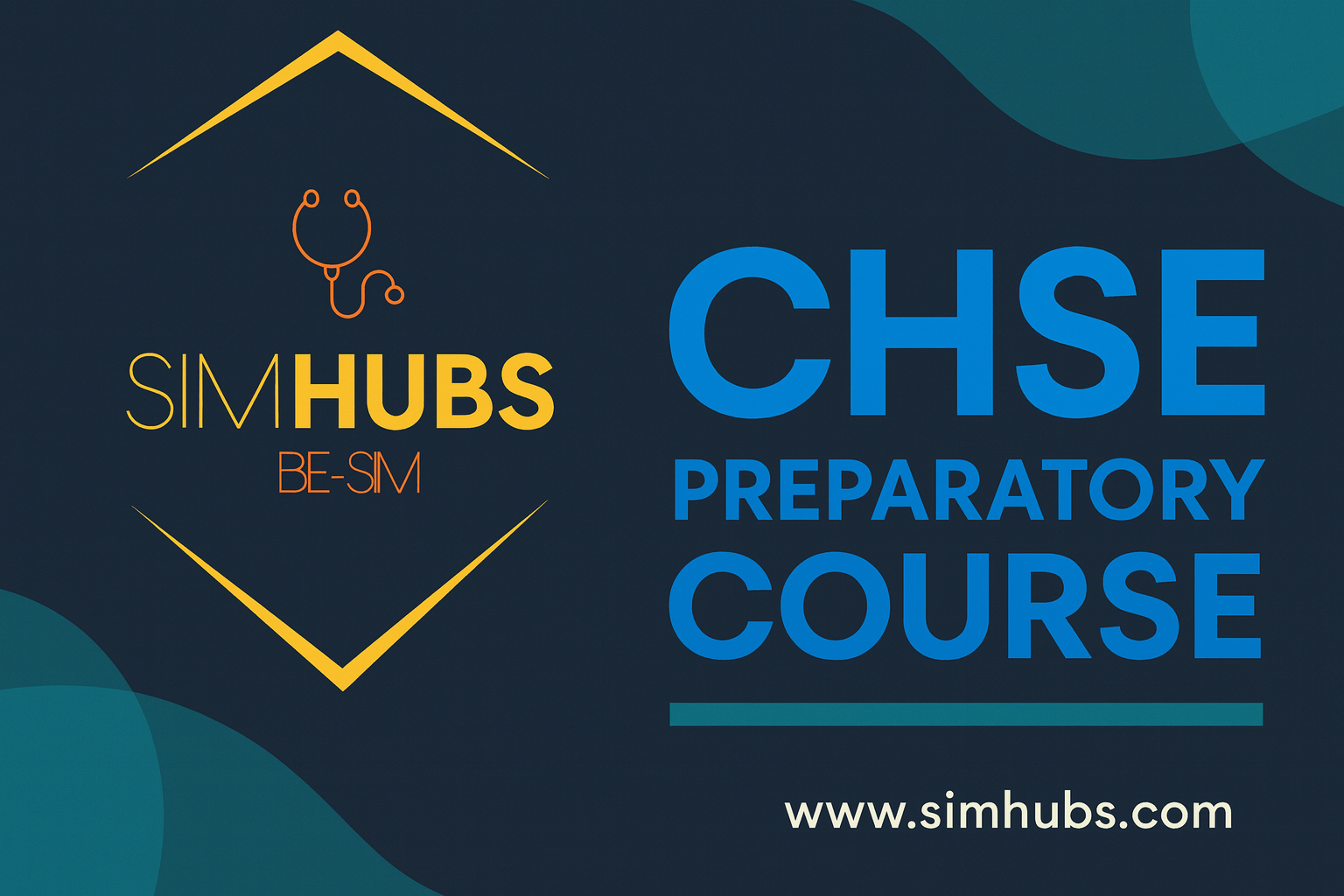What Will You Learn?
- At the end of this course, the learner will be able to :
- Understand the exam blueprint.
- Find the area for improvement based on the exam blueprint.
- Master the exam-taking strategy.
- Focus on the essential references for the exam.
- Be a CHSOS.
Course Content
Introduction
An enormous effort falls on the examinee through the experience s\he gained during two years of work. This course helps the participant know his\her strengths and weaknesses of the exam. This online course relies on the CHSOS certificate. The blueprint considered the road map. The resources recommended by the SSH are the primary resources.
-
CHSOS Preparatory course Introduction
00:55 -
Author
00:00
SSIH – CHSOS Blueprint
Blueprint is the roadmap for the learner to understand the exam's core concepts and areas (domains). This understanding will help you to identify your area of improvement.
-
Domains Table
00:00 -
What is CHSOS?
00:00 -
Overview Video
10:57
Disclosure
The online preparatory course aims to help Simulation Operation specialist to get their certification. An enormous effort falls on the examinee through the experience s\he gained during two years of work. This course helps the participant know his\her strengths and weaknesses of the exam. This online course relies on the CHSOS certificate blueprint that is considered the road map. The resources recommended by the SSH are the main to pass the exam.
The Certified Healthcare Simulation Operation Specialist (CHSOS) Marks are trademarks of the Society for Simulation in Healthcare. This course is an independent publication and is not endorsed, sponsored, or otherwise approved by society (SSH). As well the SSH does not have any legal responsibility for any error (adding or omission) in the information provided in this online course.
For detailed information about Eligibility Criteria, please visit:
https://www.ssih.org/Credentialing/Certification/CHSOS/Eligibility
-
Disclosure
00:00
How To Succeed
-
Know how to prepare
00:00
DOMAIN I: CONCEPTS IN HEALTHCARE AS APPLIED TO SIMULATION (14%)
Domain one in the blueprint is the Concept in Healthcare as applied to Simulation
-
Introduction
00:00 -
A. Identify the presentation of general medical conditions, injuries, and diseases
08:38 -
B. Recognize basic anatomical and physiological systems
03:54 -
C. Identify general healthcare procedures
15:53 -
D. Identify common medication administration practices
00:00 -
E. Distinguish among healthcare equipment, supplies, and environments
00:00 -
F. Differentiate among the roles of healthcare professionals
00:00 -
References
00:00 -
Domain I reading (Study Guide)
00:00
Domain II (33%): A. Functional knowledge and capabilities
This domain will cover the Simulation Technology Operations (33%)
-
Introduction
00:00 -
1. Differentiate among operating systems and associated compatibilities (e.g. Windows, Mac, Linux, Android)
02:48 -
2. Apply functional knowledge and terminology for the utilization of network hardware
10:24 -
3. Apply functional knowledge and terminology for the utilization of A/V equipment and software
10:36 -
4. Utilize web-based (browser-based) applications and information systems
04:20 -
5. Collaborate with the team to manage technology systems’ security (e.g. physical, network, data)
04:48 -
6. Differentiate among the capabilities of simulation modalities
00:00 -
7. Describe the functionalities of equipment used in simulation a. AV equipment b. Healthcare equipment c. Simulation specific equipment
07:50 -
8. Apply data asset management strategies
06:16 -
9. Apply knowledge required to function in different simulation spaces (e.g. equipment limitations, connectivity, air supply)
05:42 -
10. Demonstrate knowledge of cable connectivity and applications (e.g. ports, inputs/outputs, adapters, dongles)
06:49 -
11. Demonstrate knowledge of wireless connectivity and applications (e.g. routers, broadcasters)
06:49 -
Domain II (Study Guide)
00:00
Domain II: B. Configure, setup, and operate Simulation Technology
-
Configure and Setup and Operate Simulation Technology
06:05
Domain II: C. Problem solving, corrective action, and maintenance
-
1. Apply principles and procedures to identify technical problems/errors and initiate corrective action
09:50 -
2. Apply principles and procedures to create policy and perform preventive/regular maintenance
-
Domain II References
00:00
Domain III: HEALTHCARE SIMULATION PRACTICES/PRINCIPLES/PROCEDURES (27%)
-
Introduction
28:41 -
A. Manage reference materials, equipment specifications, maintenance agreements, and warranties
00:00 -
B. Collaborate to support program sustainability and/or growth (e.g. strategic plan, simulator purchase, technology services)
00:00 -
C. Facilitate simulation equipment training
00:00 -
D. Utilize resources effectively and efficiently (e.g. feasible use of money, people, and space)
00:00 -
E. Communicate and practice safe/recommended use of simulation equipment and environment
00:00 -
F. Collaborate with the simulation team to manage schedule requests, supply needs, and participant feedback
00:00 -
G. Utilize safe removal of potentially hazardous materials and supplies
00:00 -
H. Collaborate with the simulation team to collect and analyze utilization data
00:00 -
I. Utilize principles of realism as it applies to simulation activities
00:00 -
J. Recognize how changing aspects of a simulation activity impact reliability and validity
00:00 -
K. Recognize concepts that impact simulation (e.g. human factors, patient safety, modeling)
00:00 -
L. Recognize the concepts of managing risks
00:00 -
M. Implement moulage principles and applications for various materials and settings used in simulation
00:00 -
N. Provide orientation for stakeholders to simulation principles, equipment, and spaces
00:00 -
O. Support the public relations activities of the simulation program (e.g. tours, community outreach)
00:00 -
Reference
00:00 -
DIII Reading (Study Guide)
00:00
Domain IV:PROFESSIONAL ROLE: BEHAVIOR AND CAPABILITIES (11%)
-
Introduction
10:48 -
A. Utilize effective communication strategies
00:00 -
B. Recognize ethical principles and professional responsibilities as they apply to simulation (e.g. integrity, respect, do no harm)
00:00 -
C. Demonstrate characteristics of leadership in simulation practice
00:00 -
D. Recognize opportunities for professional development (e.g. conferences, webinars)
00:00 -
E. Identify trends in simulation and technology practices
00:00 -
F. Recognize credible resources (e.g. peer-reviewed journals, product manuals)
00:00 -
G. Assist in research and innovation activities
00:00 -
References
00:00 -
Domain IV Reading (Study Guide)
00:00
DOMAIN V: CONCEPTS IN INSTRUCTIONAL DESIGN AS APPLIED TO SIMULATION (15%)
-
Introduction
23:22 -
A. Recognize principles of instructional design
00:00 -
B. Collaborate in the following instructional design elements for simulation activities
00:00 -
C. Recognize principles of interprofessional education
00:00 -
D. Recognize when to include subject matter experts
00:00 -
References
00:00 -
Domain V Reading (Study Guide)
00:00
Exam Study Strategy
A summary that can help you to understand, plan, and read wisely to pass the exam.
-
Reading Strategy
05:22
Practical Exam
This exam has different questions to help the candidates to understand the questions on the application level.
-
SimHubs Practical Exam
Student Ratings & Reviews
4.8
Total 5 Ratings
5
4 Ratings
4
1 Rating
3
0 Rating
2
0 Rating
1
0 Rating
This was a good course for learning new information and reviewing prior knowledge.
The course was informative and thorough. I now have a good grasp of the CHSOS exam requirements.
Thank you for the great and comprehensive presentation, reading materials, and study guides.
Thank you for the great and comprehensive presentation, reading materials, and study guides.
It is a perfect course for whom looking to pass CHSOS exam


